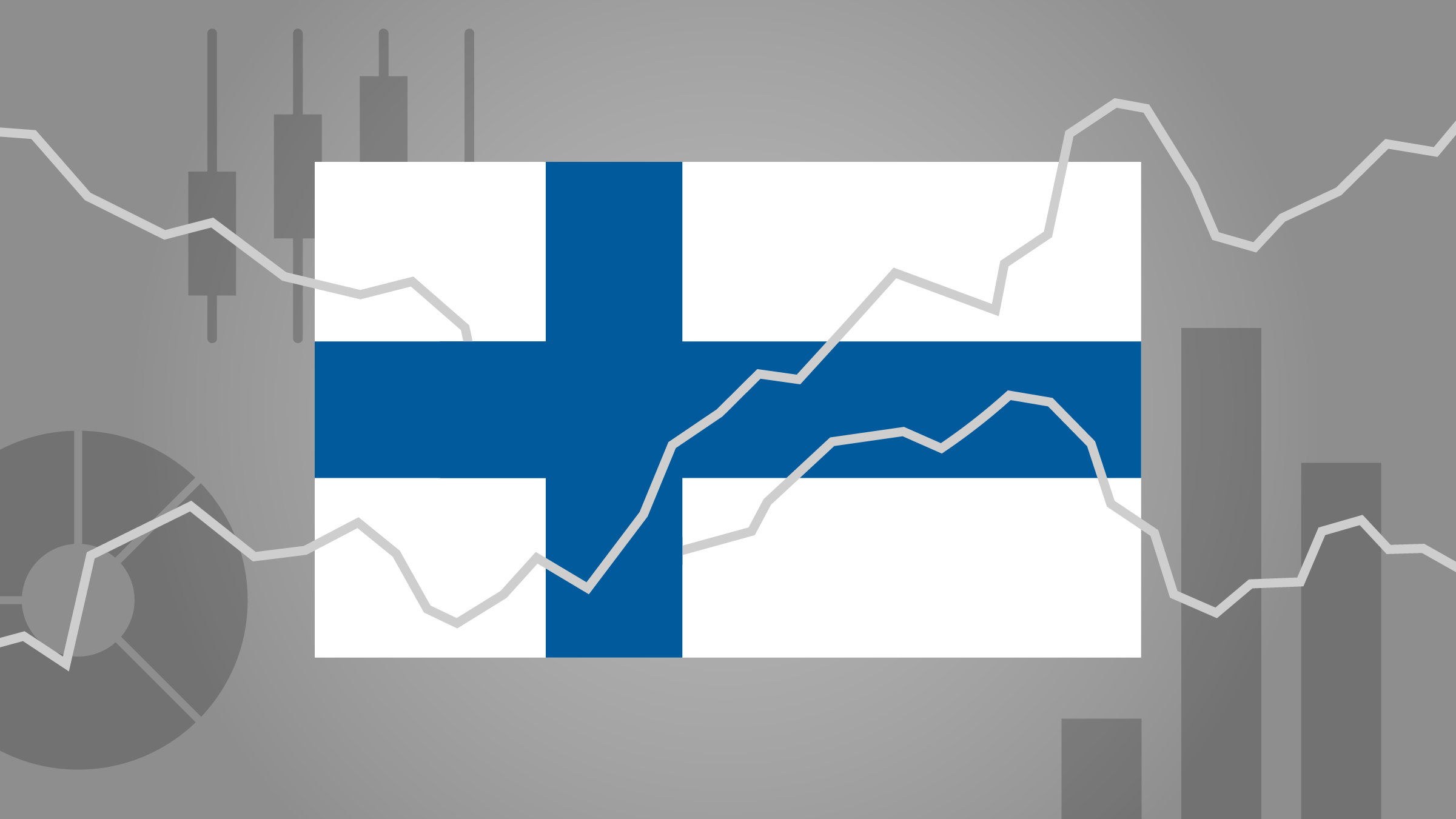Morningstarin analyytikko Vishnu Lekraj ja pääekonomisti Bob Johnson tarkastelevat, miten huonoja uutiset Yhdysvaltain työmarkkinoilta oikein ovat. Toukokuun julkistetut luvut 1.6. saivat pörssikurssit rajuun laskuun. Osasyynä ovat suuret tilastolliset korjaustekijät, joita toukokuun luvuissa käytetään. Haastattelijana on Morningstarin Yhdysvaltain verkkosivuston päätoimittaja Jason Stipp.
Jason Stipp: I'm Jason Stipp for Morningstar. We got the government employment data for May on Friday, and it was anything but a good report, with only 69,000 jobs added in that month. That was well below consensus expectations.
Here with me to offer their take on the report and what they are seeing for the employment market now is Morningstar's Vishnu Lekraj--he's an equity analyst covering the employment sector--and Bob Johnson, who is our director of economic analysis.
Thanks for joining me again.
Vishnu Lekraj: Thank you.
Bob Johnson: Great to be here.
Stipp: Bob, the first thing you said to me when you came into the studio was, "This was a bad report." This just didn't look good on a number of fronts. What were you seeing as you looked through the data today?
Johnson: Well, as you mentioned, the headline number was bad in and of itself. Then we had the fact that the previous two months were both revised downward, one of them rather largely. So, that was certainly a negative.
Then the other portions of the report that I often look at: hours worked was down, the wage growth was de minimis, and the unemployment rate, if you look at that just on the surface, was up just a tad.
So, those were things that were in there that weren't positive, and it certainly didn't look good on the surface.
Stipp: A lot of those negatives are coming out in the headlines this morning. The market also is reacting to those with the sell-off that we are seeing.
Vishnu, you said 100,000 jobs was your worry number, and we certainly came in well below 100,000 today. What's your take on that 100,000, psychologically as well as just looking at it fundamentally from the data?
Lekraj: Psychologically, it's terrible because people are going to see subpar job growth, and when you look at this report overall from a top-line perspective, it's pretty bad. It's one of the worst I've seen in terms what people were expecting, and it kind of confirms a lot of fears in people's minds as to what's happening with the U.S. economy. So, overall from that standpoint, it wasn't anything close to a rosy picture at all.
Stipp: Bob, we talked yesterday about May being a tough month for the employment market. You mentioned some of the factors behind that. I want to step away from just this one report and put it into some context, because we are looking over a series of several reports. When you take a step back and look at this report in that context, in that perspective, what sorts of trends do you start to see, and does this report change your mind about some of those trends?
Johnson: Well, I think overall my conclusion is that we're still growing and have a decent economy. Certainly, this report isn't wonderful, but when you look on a year-over-year basis and use a three-month moving average, we're still up over 1.9% in terms of employment growth, which is right in line with the GDP report that we had the other day. So, the numbers are consistent, and we certainly don't appear to be falling apart when you look at it on that more careful, more thoughtful year-over-year basis, which [adjusts for] this effect that May is often a messed up month because of all the huge seasonal adjustment factors that are in there.
Stipp: So, let's talk about those adjustment factors. If you just looked at the raw numbers, what do those say about the jobs that we actually created--and this is not to say that you should look at that way only, but what kind of jobs did we actually add before they adjusted?
Johnson: Well, we added more than 700,000 jobs this month, and we added more than 800,000 jobs the previous month, and then we took out these big seasonal adjustment factors that were obviously in the neighborhood of 700,000 to 800,000, and got the small growth number that we had. So...
Stipp: Why do they make these adjustments around this time of the year, and why are they so big?
Johnson: They are so big because a lot of the hiring historically happens this time of year when people graduate from school or when summer hiring kicks in, and so you see a lot of growth this time of year. At one point in time, almost all the jobs were added in April-May-June, and the rest of the year you really hardly had any growth.
So, just like we do with retail sales, to compare July to December, even though they are miles apart in terms of how much is actually sold, they calibrate them so we can talk to each other, we make the seasonal adjustment factor, and it is a huge number, but the problem is that the adjustment factor is so huge that just a small error in the adjustment factor messes up what the [final] number is. I said this adjustment factor was over 700,000, and we had 69,000 job growth. So, if the seasonal adjustment factor was only off by 10%, which everybody would gladly admit that it could be, the numbers may not be quite as bleak as they look.
Stipp: After they did the seasonal adjustment factors, and you also mentioned the revisions that they had [in prior months], we did see a little bit of growth from April to May...
Johnson: At least it didn't create a trend where we're going 200,000 to 100,000 to zero or something like that. At least it looks like we've kind of flat-lined there a little bit, so that was certainly good news.
And the household report, which gathers the data by asking households, instead of businesses, if they were working or not, actually showed growth of about 400,000 people. So, again, those two usually converge eventually. They are not revised away, but in a later months we'll get a stronger establishment report and then a weaker household report. So, that kind of bodes well for the months ahead.
Stipp: Vishnu, when we look at this trend over the last couple of months, it really feels like we're seeing some flatness here. We're not necessarily seeing huge losses, but we're not really gaining much, either. So, can you talk a little bit about what you make of that trend? It's like businesses have pressed the pause button almost on their hiring?
Lekraj: Exactly, so being an equity analyst you have to connect several dots to try to frame a picture for how you believe the market's going to react to certain data points and how it's going to behave in the future.
So, when you take a look at the flatness of this report over the last several months, without any huge firings in there, it's a pause button that's been hit by lot of businesses.
Now, when you combine this with consumer spending that hasn't fallen off a cliff, when you combine this with how strong the economy in the U.S. has been in terms of being solid--2% growth is not terrible--when you combine all this together, what it looks like to me is that businesses are cautious, and they are cautious because of overseas problems, overseas headwinds that they may feel may come into the U.S.
Now, the consumer themselves, the 70% of the U.S. economy, the main part of our economy hasn't really stopped growing yet. So it may be something here that businesses are cautious or too cautious for what the economy necessarily is doing.
I speak to a few realtors out there also, and they have been saying the housing market has picked up a little bit, that the ... number of days a house is on there to be sold has shrunk. So a lot of good factors are in the economy at the moment.
Stipp: So, definitely keep your eye on the consumer and what the consumer is doing. If the consumer holds up, like we've seen in the customer holding up, then the employment shouldn’t be staying down for too long in this flat area, right?
Lekraj: Exactly.
Stipp: So, Bob, what would your take be, then, given that the consumer seems to be holding up. We got some data on the consumer on Friday as well. What’s it look like on the consumer front?
Johnson: Well, the personal income data is the best it has been in several months in April, and certainly that’s a good piece of news to have--that consumers are not pulling in their horns, and the consumer incomes have also gotten a little bit better over the last two months, which should help the data along as well. So, I’m really pleased to see that. And as Vishnu mentioned, the housing market is picking up, and that’s going to be the absolute key to getting employment better again.
One of the interesting things is the construction data was one of the big negatives in the report. It was down 30,000 in the month after being up 30,000 when we had the really good months, and certainly this is kind of payback, if you will. That’s a 60,000 swing in the report, and certainly we had great weather in February and March that kind of inflated the numbers, and now when we return to normal, it’s like, oops, we are not having the usual spring bounce in construction employment.
So that’s one of the other things that makes me feel this wasn't a disaster report. A lot of this was a swing in construction, a lot of it was a swing in professional services, and a lot of it was amusement parks and gambling facilities. It’s shocking that those were the things that really swung negative.
Stipp: So back to the consumer, we have also seen that crude has taken a hit recently and is down, which could be good news on the inflation front for the consumer, and could we some tailwinds that will help consumers at least maintain their current level of spending?
Johnson: I think that's a great point. Gasoline prices have continued to tumble. I was surprised even Brent crude is down under a $100 today when I checked. So, that certainly should mean better gasoline prices, and that always gives consumers more confidence and actually puts more money in their pockets. So, that's really good news.
And there is a whole boatload of other commodities that are down as well, including agricultural commodities. And food is a bigger impact than gasoline is. Gasoline is more visible, but food is also going to be coming down, given what we've seen in some of the agricultural prices. And we're going to have a test in my theory: are the falling prices of commodities going to offset some of the weakness we're seeing in China.
Stipp: Vishnu, if the thesis is that the job market at this 69,000 level isn't growing at the same rate that we're seeing the broader economy grow, how long until those two things get back into line and we see job growth around the 200,000 level, which over time would be about as much as we're seeing GDP growing?
Lekraj: If you see GDP accelerate a little bit toward the back half of 2012, it's going to be very quick in terms of that trickling down to the employment market, because a lot of businesses cut their staff really, really tightly over the recession, and then they have to really get that back up if consumer demand increases.
Now, you include all that together with some [sector-specific] troubles, such as some of the consumer electronics [firms], some of the tax return folks have stated they're going to retool their businesses. So when you take a look at that with some of the losses this month, all that makes sense.
So, ... it's not necessarily weakness in the overall economy. Maybe there are some businesses that really need to retool their whole strategy and whole operations that are causing some of the problems.
Stipp: Bob, if we are out of line right now with the 69,000 based on what you think the employment market is capable of given economic growth that you're seeing, how long until we see them come back together again?
Johnson: Probably another month or two anyway. We had three or four months where we were well over 200,000 when the right number probably should have been 180,000. So we'll probably have to spend three months where we're a similar amount under 180,000.
Stipp: All right, guys, thanks for your perspective on this disappointing report today. Hopefully, we'll have better news to talk about next month, but thank you for joining me.
Lekraj: Thank you.
Johnson: Thank you.
Stipp: For Morningstar, I'm Jason Stipp. Thanks for watching.
















